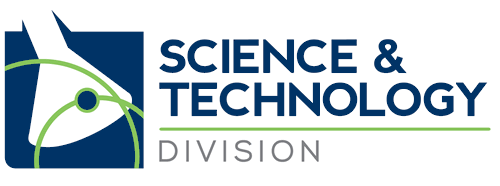1.6K
Drugs of Abuse: A Pharmacological Perspective
R. A. (Bob) Lyon, Section Head R&D Proctor and Gamble
Reviewed by Brian Howells
Outline of drug action in the central nervous system
The talk began by outlining the functioning of the central nervous system, wherein the neuron bodies emit electrical signals along the dendrites to the terminal branches to release neurotransmitters into the synapse to communicate between nerve cells, etc., and the various levels at which drugs can affect this process: before the synapse (presynaptic) by affecting firing, synthesis storage and release of the neurotransmitters, or inhibiting their re-uptake so that their effect persists for longer, or after the synapse (post-synaptic), by interacting with their receptors to potentiate or block their effects on their target.
They can stimulate, or mimic, the action of natural substances (agonists, e.g. serotoninergic drugs such as LSD, which are 5HT-2A agonists) or block this action (antagonists such as Naloxone, an opioid antagonist).
The language of drugs (Reference USA)
Drugs can be used for medical or non-medical (“recreational”) purposes. Medical drugs are classified broadly as over the counter (OTC) or prescription (Rx, ethical); there is also a further category of “behind the counter” for OTC substances which can be used as starting materials for illegal drugs (eg. pseudoephededrine, a nasal decongestant which can be used to make methamphetamine).
Potential drugs of abuse are “scheduled”, ranging from Schedule 1, with no known medical use and high degree of danger from abuse (e.g. heroin and LSD), to Schedule 5, with medical use and low abuse potential (e.g. codeine, an opiate). Benzodiazepine and amphetamines are 3-4, and cocaine is 2, because of medical use in eye surgery.
Designer drugs are synthetic drugs employing chemical modification to avoid scheduling. Until identified and scheduled, they remain legal; however, since they are not subject to any conventional approval process, they are potentially extremely unsafe.
Route of administration – how the drug is administered e.g. orally, nasally, by smoking, intravenously, rectally, vaginally.
Drug delivery device – the device used to administer the drug, e.g. sugar cube, pipe, syringe, cup.
Addiction: psychological craving
Dependence: a physico-chemical need for the drug for well-being
Withdrawal: what happens after cessation in dependents
Tolerance: the need for more in order to get the same effect
Classes of drugs of abuse
Central nervous stimulants: include caffeine, nicotine, amphetamine, cocaine, and “bath salts”. Effects include high energy/focus and decreased need for sleep.
Caffeine: adenosine receptor antagonist, side-effects diuresis, nervousness, rapid tolerance, addictive, leads to dependence (withdrawal effects)
Nicotine: nicotinic receptor agonist; side effects increased blood pressure and heart rate; rapid tolerance, addictive, leads to dependence (one of most addictive)
Amphetamines (illegal synthetics): increase dopamine and norepinephrine release and block reuptake; side effects increased BP and heart rate, psychosis and long term psychological changes (schedule 2)
Cocaine: snorted, smoked or injected in increasing order of effect. Increases dopamine release and reuptake; side effects increased BP and heart rate (potentially lethal) (schedule 2 -use as anaesthetic in eye surgery)
“Bath salts”: designer drugs (mephedrone, methylenedioxypyrovalerone, etc., Ivory Wave, Vanilla Sky, etc.). Cheap high, effects similar to amphetamine; side effects include paranoia, hallucinations and suicidal tendencies (schedule 1)
Central nervous system depressants: include alcohol, opiates/opioids, barbiturates, benzodiazepine; effects, relaxation, analgesia, sedation
Alcohol (ethanol): affects acetylcholine, GABA (γ-aminobutyric acid) and NMDA (N-methyl-D-aspartate). Exact mechanism not fully understood; general depressive effect with dose response from relaxation to death; side effects foetal alcohol syndrome, alcoholism, liver disease; tolerance, addictive, leads to dependence. Warning as to the potentially dangerous effects of combining with a stimulant such as caffeine and guaraná (e.g. Four Loko)
Opiates/opioids: e.g. morphine, codeine, thebane; µ opioid receptor agonists; side effects include constipation; highly addictive/dependency creating (withdrawal)
Barbiturates and benzodiazepines: GABA receptor agonists; anxiolytics and hypnotics (librium, valium, rohypnol)
Psychedelics: principal effects are enhancement or modification of reality
Marijuana: mildly hallucinogenic, contains delta 9-THC and >60 other cannabinoids which act as cannabinoid 1 and 2 receptor agonists; effects include euphoria, laughter and relaxation; side-effects, anxiety, coughing and paranoia
K2; Spice and THC are more potent and more addictive
LSD, psilocybin, mescaline, DMT, dimethoxytryptamine (santo daime); serotonin 5HT2A agonists; effect (8-12 hr) is alteration of experience, vivid colours, the setting determines the trip; side effects include weakness, jaw clenching and increased heart rate; rapid dependence, no dependence or addiction; potential applications to enhance spirituality in terminal patients
Ecstasy, (N-methyl)-3,4-methylenedioxyamphetamine), MDMA; adrenaline uptake inhibitor, serotonin 5HT2A agonist
Dissociative: e.g. PCP (phencyclidine), ketamine and dextromethorphan; NMDA antagonists, altering distribution of glutamate, associated with out of body experience/detachment.
PCP is addictive and associated with psychotic side effects; ketamine is used as an animal tranquilizer, and can lead to amnesia, depression and breathing problems at high doses. Dextromethorphan is an OTC cough suppressant which causes similar effects at high doses
Saliva divinorum, κ-opioid agonist, can induce dissociative effects and “visions”; used in Mexican native religion.
Delirants: alkaloids atropine and scopolamine are (competitive) muscarinic cholinergic antagonists, associated with tachycardia and hyperthermia.
Brian Howells bhsci@uol.com.br
Brian Howells has a bachelor’s degree in agricultural science and has been a freelance translator from Japanese to English for around 25 years specializing in technical (principally chemical) and patent-related translation. For the last 20 years he has been living on the beach in São Paulo state, Brazil.

